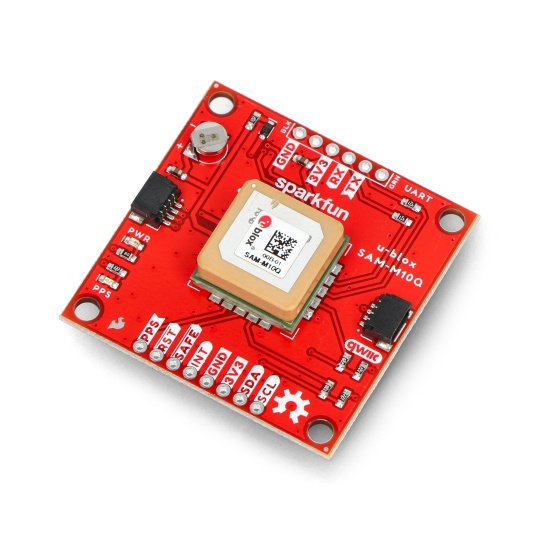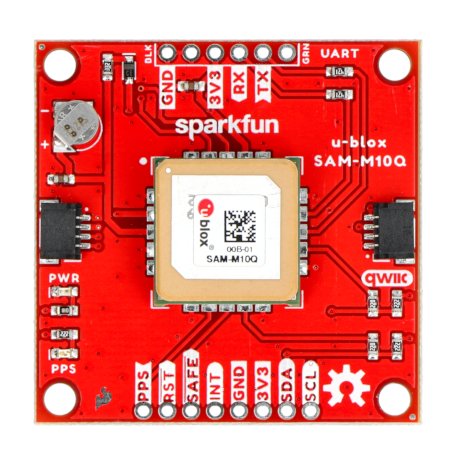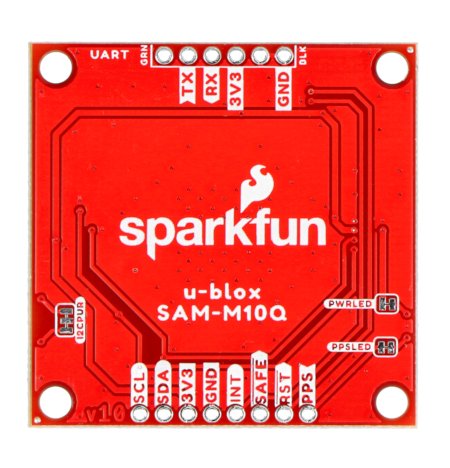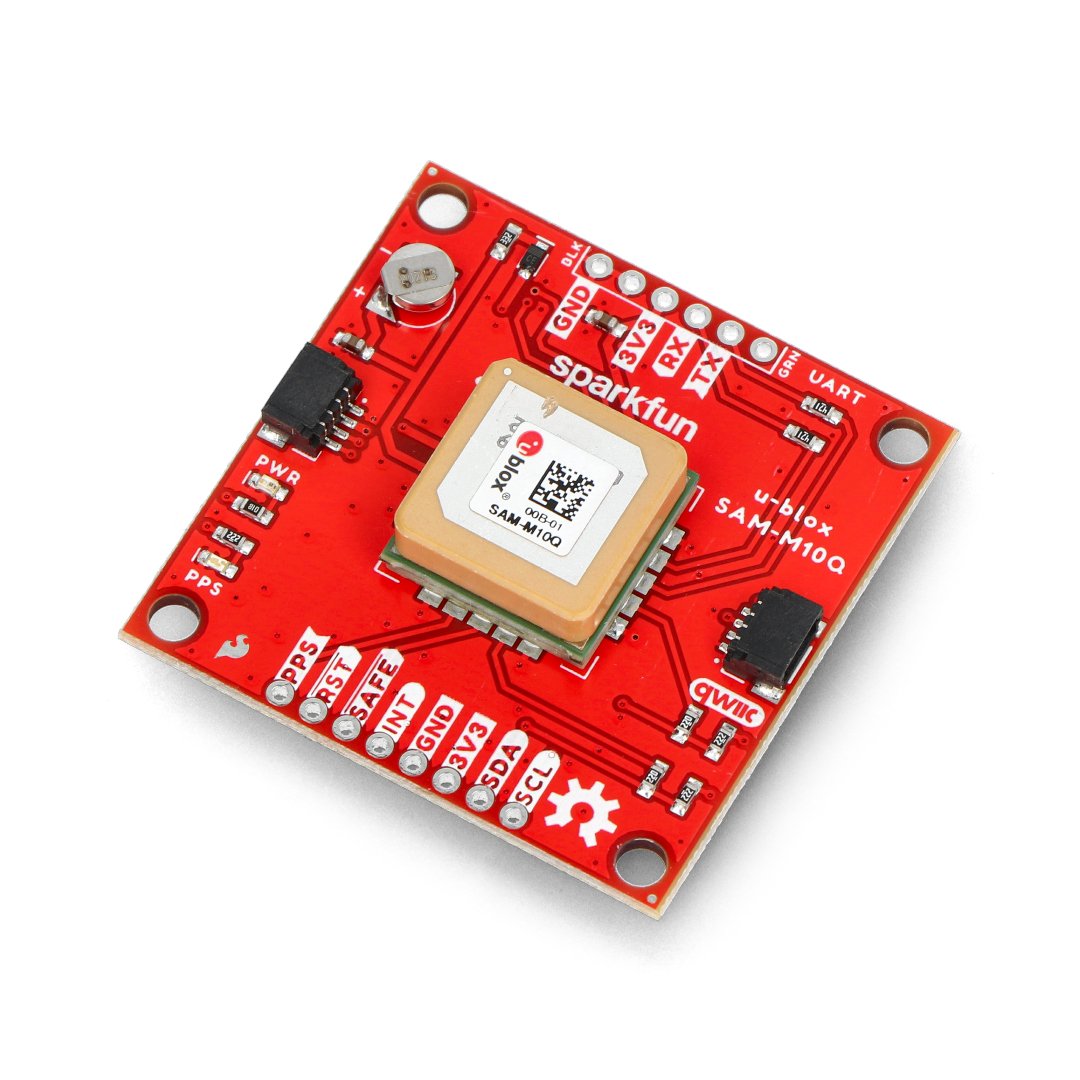Product description: SparkFun GPS Breakout - GPS module with SAM-M10Q chip and built-in antenna - Qwiic - SparkFun GPS-21834
SparkFun GPS Breakout - SAM-M10Q is the successor to the popular and frequently used SAM-M8Q GPS module from the same manufacturer. It is equipped with the SAM-M10Q chip antenna from u-blox, characterized by lower energy consumption with greater efficiency and accuracy. The SAM-M10Q can read data from four GNSS constellations simultaneously , improving positioning time and positioning accuracy even in areas with a limited view of the sky. It is compatible with the L1 band in all five GNSS constellations (GPS L1 C/A, QZSS L1 C/A L1S, GLONASS L1OF, BeiDou B1C and Galileo E1B/C).
Satellite navigation - what is GNSS?
GNSS is an abbreviation for Global Navigation Satellite Systems, which can be translated as Global Navigation Satellite Systems that cover the entire Earth's surface. Their main function is to determine the user's location. The GNSS family includes, among others, GPS (Global Positioning System) and GLONASS systems. How does satellite navigation work? It is based on radio navigation, i.e. it uses radio waves emitted by satellites, thanks to which it is possible to determine the location and movement parameters of receivers on the surface of our planet.
SparkFun GPS Breakout - GPS module with SAM-M10Q chip - Qwiic - SparkFun GPS-21834.
BeiDou and Galileo systems
BeiDou and Galileo are other satellite systems that are part of global navigation systems (GNSS).
BeiDou is a Chinese satellite navigation system that aims to provide accurate positioning and time around the world. First implemented in the late 1990s, it initially had a limited scope, covering mainly Asia, but has expanded globally in recent years.
Galileo is the European satellite navigation system that was created to ensure Europe's independence from other international systems such as GPS and GLONASS. It is an initiative of the European Union and the European Space Agency to provide highly accurate positioning around the world.
Both systems, like GPS and GLONASS, are based on radio navigation and use radio waves sent by satellites to determine the location and movement parameters of receivers on the Earth's surface.
Our offer also includes other GPS modules - check it out!
Technical specifications of the GPS module from SparkFun
- Built-in chip: SAM-M10Q
- Receiver: u-blox M10
- Receive up to four GNSS constellations simultaneously
- Compatible GNSS constellations: GPS L1 C/A, QZSS L1 C/A L1S, GLONASS L1OF, BeiDou B1C, Galileo E1B/C
- Horizontal position accuracy: 1.5 m
- Update frequency:
- Maximum 5 Hz (four GNSS)
- Maximum 18 Hz (one GNSS)
- Launch time (four GNSS)
- Cold start: 23 seconds
- Assisted start: 1 second
- Hot start: 1 second
- Maximum altitude: 80,000 m
- Maximum speed: 500 m/s
- Speed accuracy: 0.05 m/s
- Heading accuracy: 0.3°
- Time pulse accuracy: 30 ns (RMS)
- Input voltage: 3.3V
- Power consumption (four GNSS)
- Acquisition: ~13 mA
- Tracking (continuous): 10 mA
- Tracking (power saving): 5 mA (max. three GNSS)
- Pins: two Qwiic connectors/soldering pads
- Board dimensions: 40.6 x 40.6 mm












































































































































































































































































































































